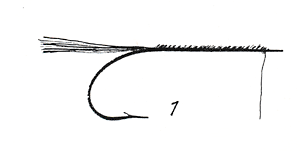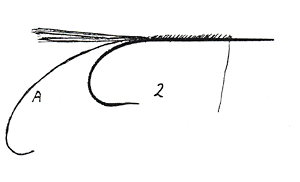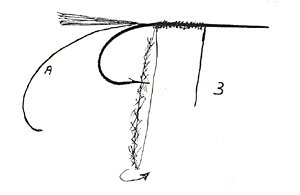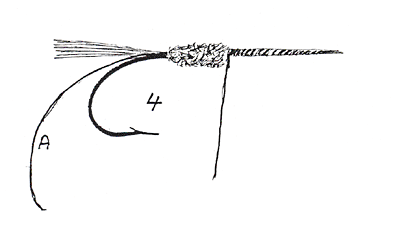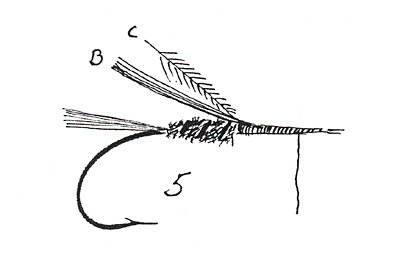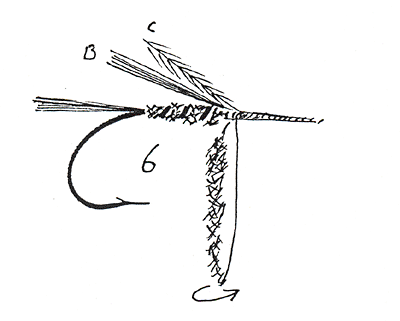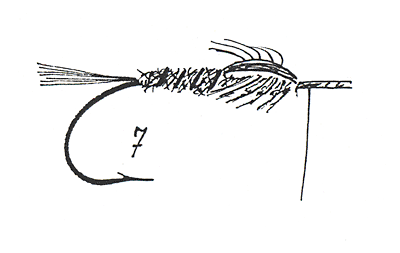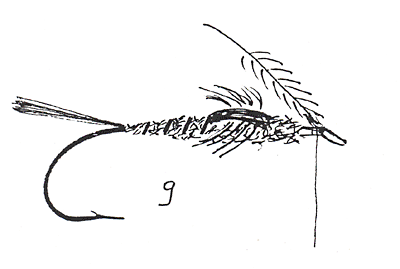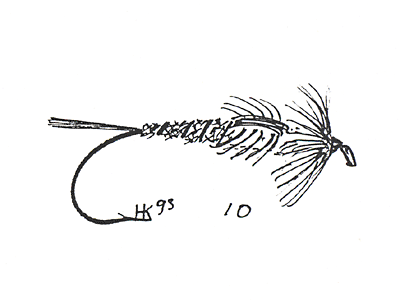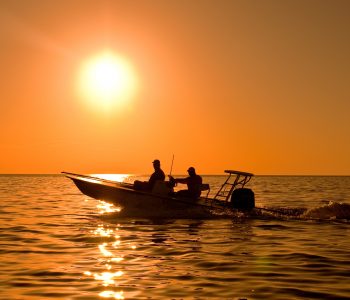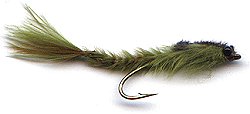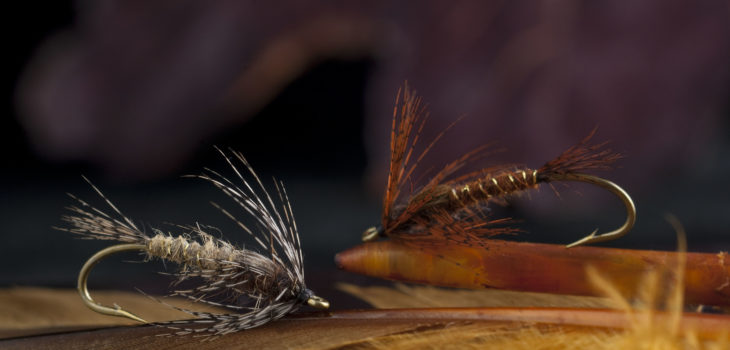
The Remerger
There are unweighted nymphs, flymphs and emergers, but because I think that this pattern has all these properties built into it, I gave this fly the striking name of the REMERGER. I arrived at this name because my wife Ina uses this pattern with a technique that is opposite to the actions of a hatching insect.
Let me share with you a funny story, which I think you will enjoy. We have to go back to a fishing trip to Norway in 1991. This was the first year in which my wife had used a fly rod. It was during our holiday that she had just successfully finished casting lessons from my friend Rudy van Duijnhoven, a great teacher. It was also the first time that this pattern had been used, since at that time, it was only recently developed. Hence, I had no name for it. Ina was testing it for me without knowing it!
RIVER GLOMMA
My plan was to drop her at a very good spot for “Corregones,” with the intention of leaving her on her own to get some confidence and fishing experience. We traveled to the upper parts of a small tributary of the River Glomma. A beautiful place, quiet and peaceful!. For us it was like a paradise! When we arrived there was no wind, and the water looked like a mirror. The huge mountain tops at the other side of the lake were covered by snow, and gave us a wonderful panorama. The Swedish border was just a few miles away.
We stopped to rest and enjoy the silence and spectacular nature around us. After lunch, while Ina prepared her tackle, I explored the area. At the river, I saw a fabulous elk browsing on some of the water plants. When I called to Ina to show her this beautiful animal, it was frightened by my voice and disappeared like a ghost before she got the chance to see it. A pity, but I was sure we would see another one that day.
I knew the area very well because I had fished it for several years previously. The best place is at the end of the lake where the river begins; a perfect place for the Corregones to feed. They swim around in large schools, sometimes numbering in the hundreds of fish. The point where the current begins, as the lake empties into the outlet, is a real hot spot. The current is slow and easy; a place made for a novice flyfisher. Before I could put Ina on the best spot, I had to find the place where the fish were feeding. I walked beside the bank and discovered a large school of Corregones.
NEW NYMPH
I gave her a few of my new nymphs because this species is very difficult to catch on a dry fly. I had a good feeling, since Ina had already caught some small grayling the day before. This, however, would be her first experience without any help from me. I watched her, and when I saw she could managed it by herself, I walked further down stream to try my luck in the river for some grayling.
After a short period of time, I returned and proudly watched my wife as she hooked fish after fish. Several of them got off during the fight, but because this species has a very soft mouth, this is quite normal. During the period I watched her, she successfully landed three fish and released them safely. This was unbelievable! I was amazed, because I had only caught a few fish myself! I watched her more carefully, attempting to analyze her way of fishing. After a cast, she would pause a rather long time (to try to find her bite indicator, she told me later).
In that time, the fly would sink very slowly to the bottom without any movement or retrieving. The fish took the nymph on the drop, moving the bite indicator, and Ina would set the hook. When I came closer, she looked at me very proudly with a special smile on her face. A smile which told me that a new flyfisher was born in the wilderness of Norway. She fished with a confidence which I had never seen before. Her technique is one I sometimes use in Holland for roach and bream, when fishing by myself. In her inexperience, Ina had demonstrated to me that this technique also worked well for the difficult “Corregone.”
AMAZED
After her success with my unknown experimental fly, I tried the fly myself, and was amazed. With a sink tip line, it was a deadly pattern in the deep Scandinavian pools. Subsequently, it was a real killer in most of the rivers I fished back in Central Europe.
It is not uncommon for me to have a good feeling when I publish an article about special flies or patterns. I know my patterns very well, and only write about them when they have been tested in at least 20 totally different waters, and with good results. I know that this pattern is an excellent fly because a good objective test took me almost three fishing seasons. I wanted to be sure of myself, and I was pleased when several very close friends also participated in my tests. I used their conclusions, suggestions and opinions in my evaluation, before forming my own opinion. That’s probably the reason why I have such confidence in my flies. I think I have found a good, catchy name for this series of flies, and hope they will be as successful for you as they have been for me and my wife. Below, I have given you the most successful dressing that I have found to date, but I think that it is a nice pattern with which to experiment, especially if you change colors. You can match the hatch easily.

THE DRESSINGS for two “Remergers” from my series:
REMERGER No 1
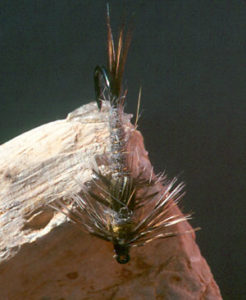 Hook : Daiichi 1710 size 10-8
Hook : Daiichi 1710 size 10-8
Tail : Partridge fibers
Ribbing : Fine gold or copper wire (only rear section)
Body : 1/3 Hare’s ear plus no 2 natural color (rear)
1/3 Olive brown hare-tron no 24 (center)
Thorax : 1/3 Grey hare-tron no 3 (front)
Wingcase : Heron herls dyed olive
Legs : Starling body feather tied under the wingcase
Front hackle: Starling body feather
REMERGER No 5
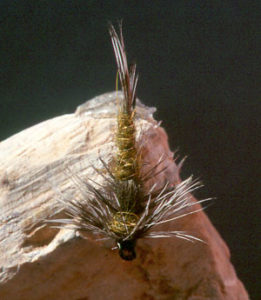 Hook :Daiichi 1710 size 10-8
Hook :Daiichi 1710 size 10-8
Tail : Three Chinese boar fibers
Ribbing : Fine light brown transparent swanudace
Body : Natural ostrich herl
Wing case : Heron herls dyed olive
Legs : Soft dark blue dun hackle fibers or starling body feather
Thorax : Natural hare’s ear plus no 2
Front hackle : Starling body hackle small
Step by step TYING TECHNIQUE REMERGER No 1 (see drawing)
